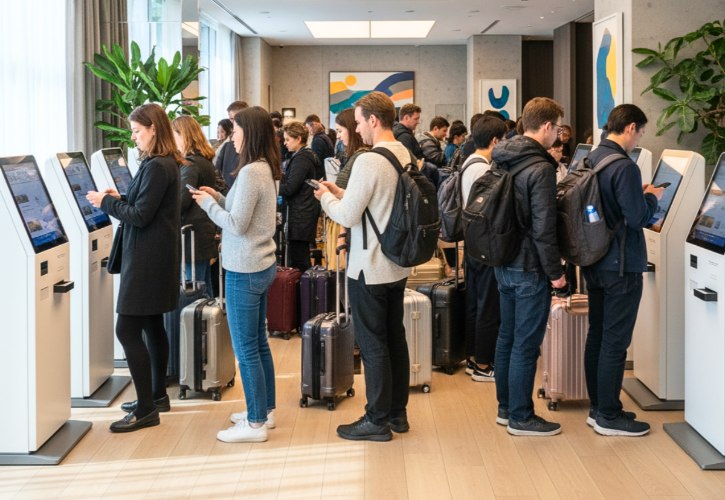
Finding the right hotel in Tokyo can feel overwhelming with so many options.
I’ve learned that small oversights often lead to big inconveniences.
I hope by sharing these tips, you’ll feel more confident when booking.
With a bit of planning, you can avoid the common mistakes and enjoy a stay that feels easy, comfortable, and worry-free. 😊
1. Staying Too Far from a Train or Subway Station

In Tokyo, location is everything. Choose a hotel within a 5 to 10 minute walk of a station.
Anything longer can feel exhausting after a full day of sightseeing, especially if you are carrying shopping bags or caught in the rain.
What seems like a “short walk” on a booking site often feels much longer in reality.

Big stations like Shinjuku and Tokyo Station are excellent bases thanks to their direct connections across the city.
The catch is that these stations have many exits, and leaving from the wrong one can easily double your walking time.
Always check the exact walking route with Google Maps before booking, not just the hotel’s description.
Cheaper hotels in the suburbs might offer larger rooms, but the daily 30 to 60 minute commute will drain your time and energy.
Staying central in areas like Shinjuku, Ginza, Asakusa, or Ueno keeps you closer to the action and makes your trip smoother.
2. Forgetting to Check Airport Access Options
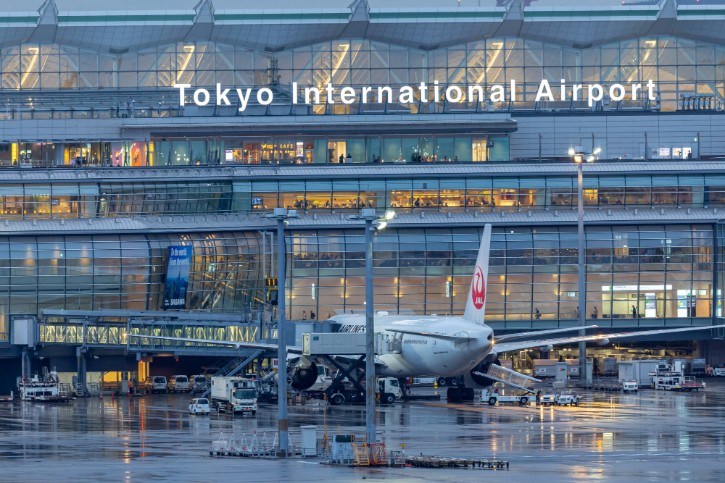
Tokyo has two major airports, and the one you use makes a big difference.
Haneda is close, about 30 minutes from central Tokyo, while Narita is much farther at 60 to 90 minutes.
If you do not plan ahead, your first or last day could be spent dragging luggage through long transfers.
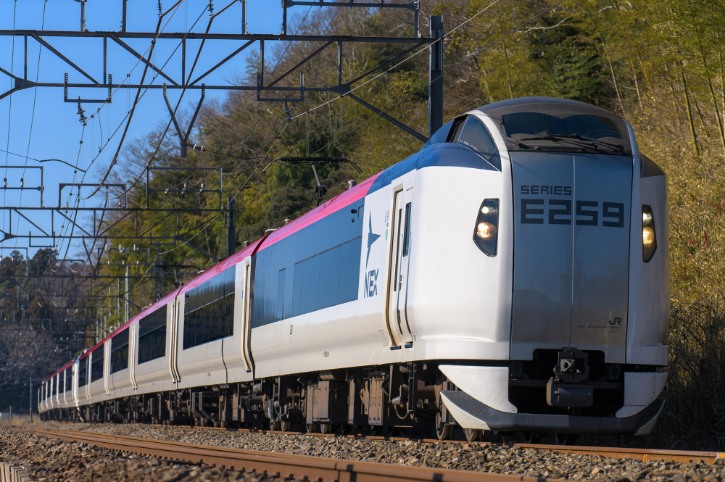
From Narita, you have several direct options. The Narita Express goes to Shinjuku, Tokyo Station, and Shinagawa.
The Skyliner takes you to Ueno or Nippori in under 45 minutes.
You can also use the Keisei Access Express, which runs directly from Narita to Asakusa, making it a great choice if you are staying in that area.
For added convenience, the Airport Limousine Bus runs from Narita to major districts, including Shinjuku and Tokyo Station, and often stops at large hotels.
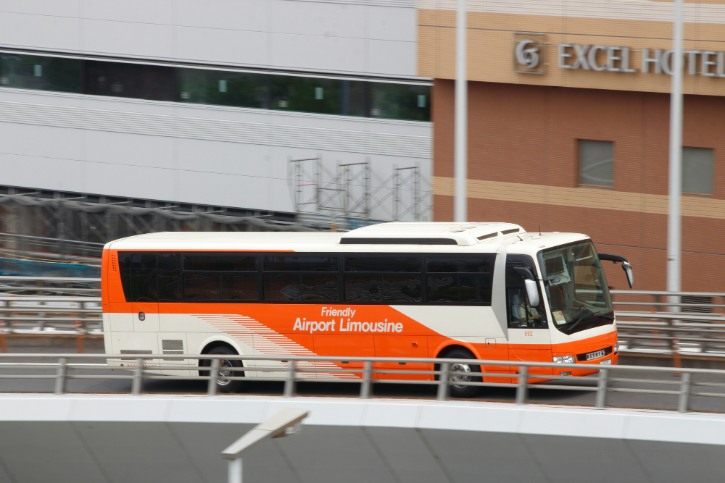
From Haneda, the Airport Limousine Bus is the easiest choice.
It goes directly to Shinjuku, Tokyo Station, and other central areas, saving you from carrying heavy luggage through crowded train stations.
Shinjuku, Ueno, and Asakusa are some of the best areas to stay in Tokyo because they have direct transport from the airports.
Always look for direct transport options to make arrival and departure much smoother.
3. Booking Too Late During Peak Tourist Seasons
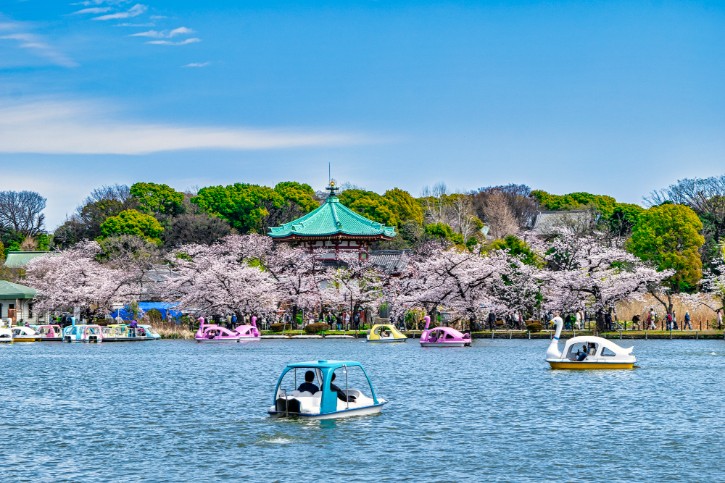
Tokyo is a year-round destination, but some seasons are busier than others.
Cherry blossom season (late March to early April) and autumn foliage (November) draw massive crowds, with hotels often selling out 3-6 months in advance.
If you book too late, you may find yourself stuck with accommodations far outside the city or limited to high-end options that exceed your budget.
To avoid this situation, plan ahead. Book at least 2-3 months in advance for regular trips, and six months ahead for cherry blossom or autumn seasons.
Many hotels offer free cancellation policies, so you can reserve early and adjust your plans later if needed.
This approach helps you secure better locations and rates before they disappear.
4. Overlooking Japan’s Major Holidays
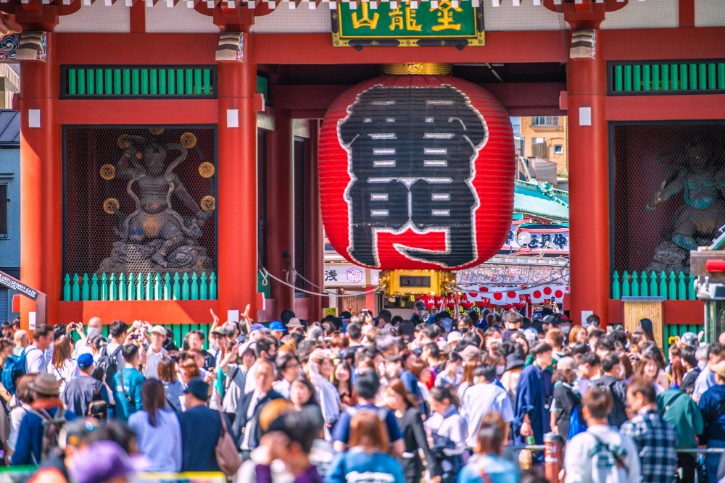
Japan’s major holidays can significantly complicate your travel plans if you’re not prepared.
Golden Week (late April to early May), Obon (mid-August), and New Year (December 29–January 3) represent the busiest travel periods of the year.
Hotels and trains fill up rapidly, attractions become overwhelmingly crowded, and prices rise significantly across all sectors.
If you must travel during these times, book hotels and train tickets as early as possible.
A smarter option is to travel just before or just after these holidays.
You’ll avoid the crowds, save money, and still enjoy the same experiences without the stress.
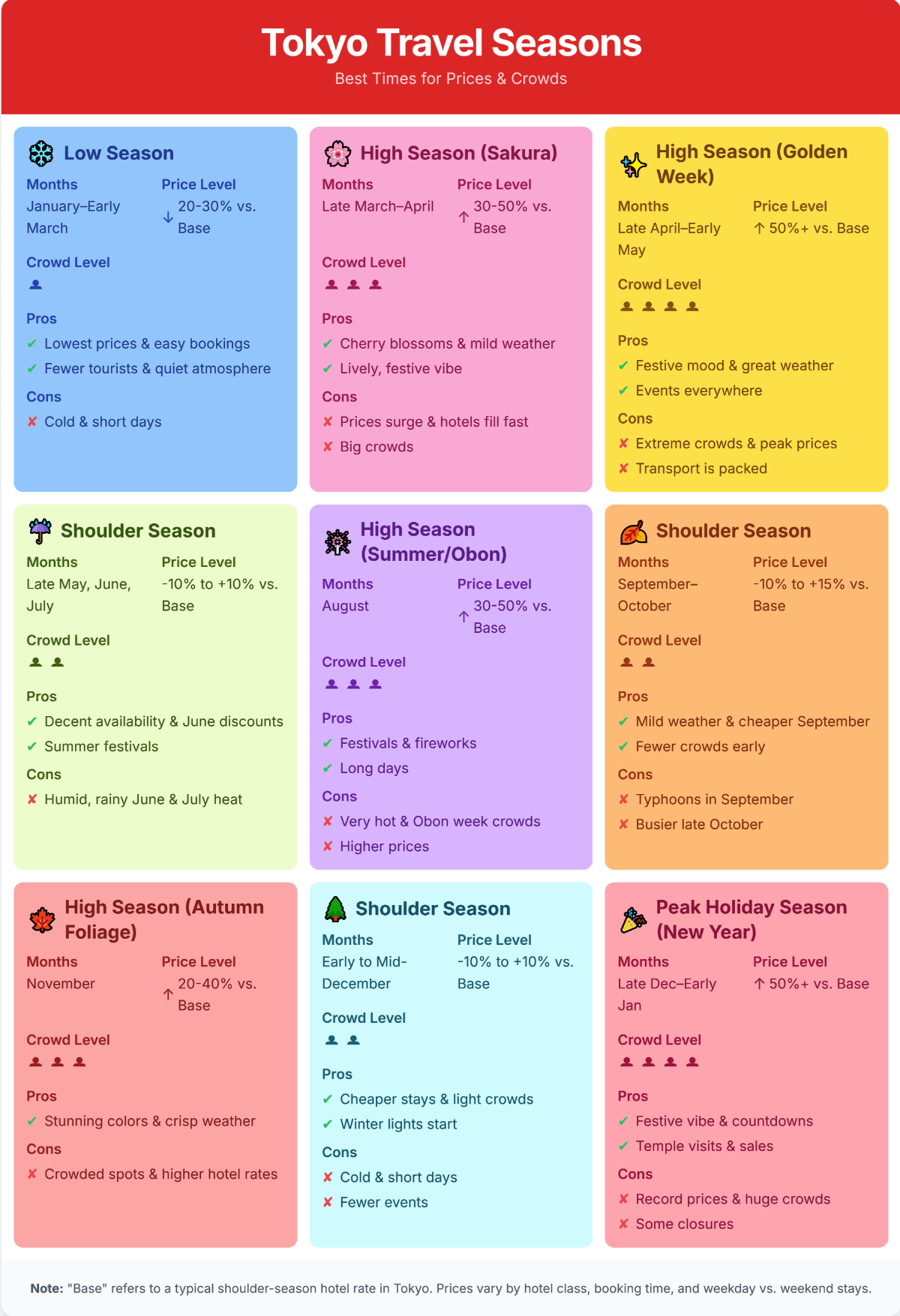
5. Expecting Hotel Rooms in Tokyo to Be Spacious
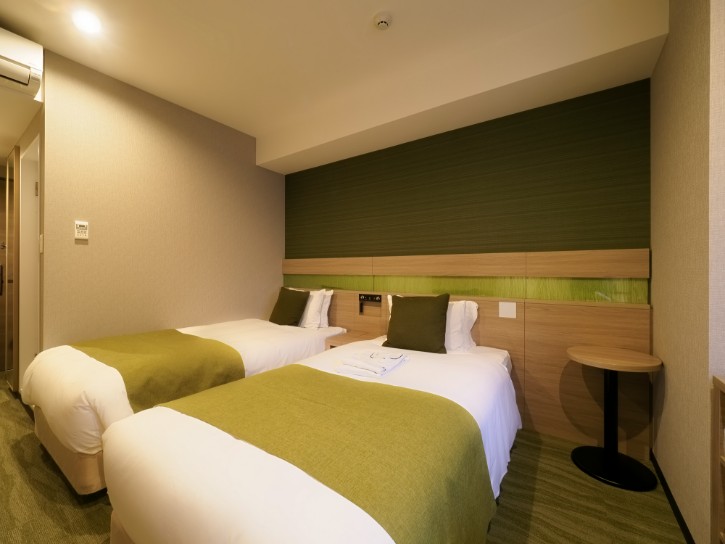
Space is limited in Tokyo, and hotel rooms show this clearly.
Most budget and mid-range double rooms are only 15 to 18 m², usually just enough for a bed, a small desk, and a compact bathroom.
If you’re used to large hotel rooms in other countries, this can come as a shock. Bed sizes are also smaller than many travelers expect.
A semi-double is only 120 cm wide, which feels very cramped for two adults.
A standard double is 140 cm, still smaller than a Western queen bed.
For couples, twin rooms with two separate beds often provide more comfort and space to move around.
Families and groups should know that standard rooms rarely fit more than two people. If you’re traveling with others, it’s better to look for triple rooms or family rooms.
6. Not Checking for Coin Laundry (Essential for Longer Stays)

When staying longer in Tokyo, laundry access becomes very important. Having coin laundry in your hotel is a huge convenience.
It lets you pack fewer clothes, travel lighter, and wash mid-trip without wasting time searching for a laundromat.
Most hotels provide coin laundry rooms, but not all of them. A wash usually costs about ¥300, and drying is about ¥100 per cycle.
Most machines already include detergent automatically, which makes the process simple and easy.
Instructions are often available in English, and staff are usually happy to help if you are unsure.
The easiest way to confirm is before you book.
Check the hotel’s official website or search reviews on Google, Agoda, or Booking.com using the keyword “laundry” to see if the hotel has coin-operated machines.
If the hotel does not provide this, you will need to use an outside laundromat or pay for expensive per-item laundry services.
For longer trips, knowing this detail in advance can save you both money and stress.
7. Ignoring Nearby Convenience Stores When Breakfast Isn’t Included
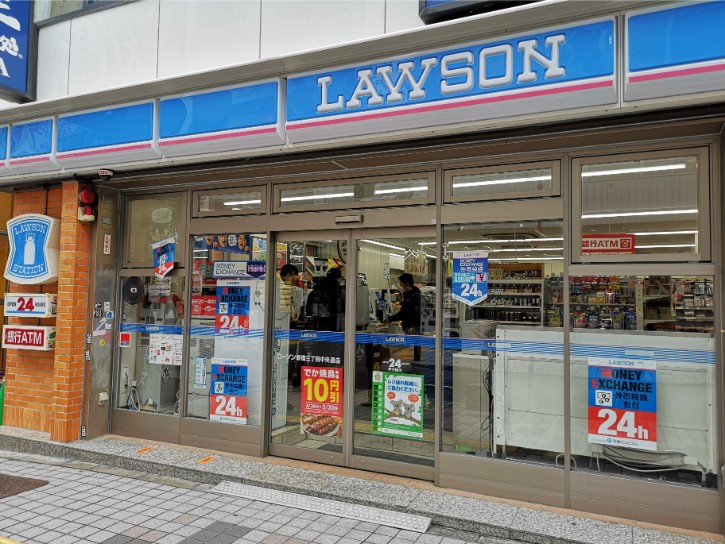
Hotel breakfasts in Tokyo can be expensive, usually ¥1,500 to ¥2,000 per person.
A convenience store breakfast costs around ¥500 and can be just as filling.
Stores like 7-Eleven, FamilyMart, and Lawson are open 24 hours and are almost always nearby.
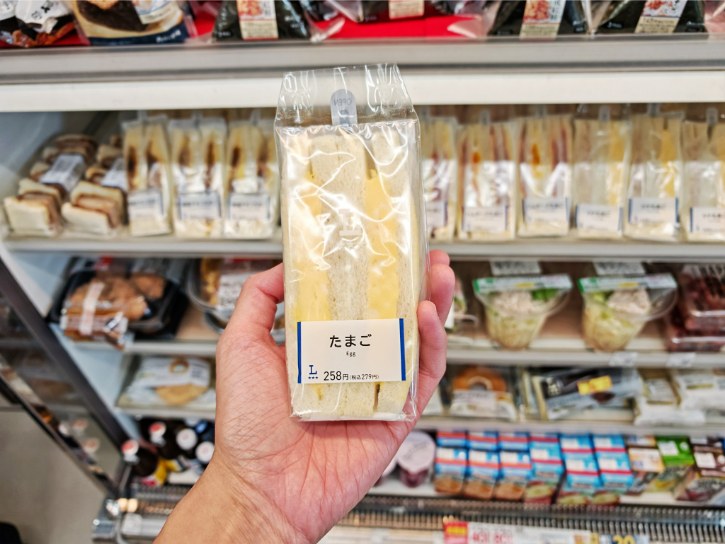
You will find onigiri rice balls, egg sandwiches, fresh salads, bakery items, hot snacks, and coffee ready to grab in the morning.
This makes it easy to eat quickly before heading out or to take breakfast with you if you have an early train.
Before booking your hotel, check Google Maps to make sure a convenience store is close by. It will save you both time and money.
I personally like to get breakfast from convenience stores because there are so many delicious foods you can try.
Read More: 10 Delicious Meals from Japan Convenience Stores
8. Not Listing All Guests (Including Children)
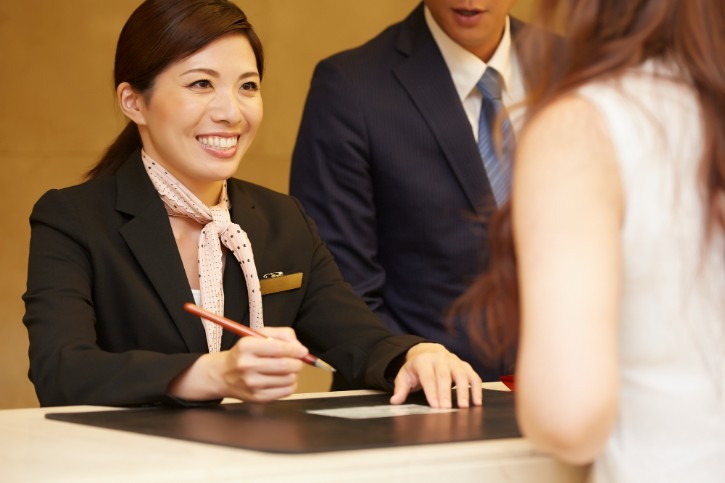
When booking a hotel in Tokyo, it is important to list every guest staying in the room.
Hotels in Japan are strict about the number of people allowed per room, and this includes children.
If you only register two adults but bring along a child, the hotel may refuse check-in or charge extra fees on arrival.
Rooms are designed with limited capacity, often just for two people, and safety regulations mean hotels cannot simply “bend the rules”.
Even if your child is small and you plan to share a bed, the hotel may still require that they are listed in the booking.
Always include kids in your reservation, even if they do not need their own bed.
To avoid surprises, double-check the hotel’s booking policy and confirm the maximum occupancy before reserving.
Being accurate with guest numbers saves you from stress at check-in and ensures a smoother start to your trip.
9. Failing to Research the Hotel’s Exact Location
In Tokyo, location details matter more than you think.
Hotel chains like APA or Sunroute often have multiple branches in the same district, and names can be confusing.
Double-check the full address before booking to avoid mixing them up.
Station exits are another common trap. Leaving on the wrong side of a large station like Shinjuku can double your walking time.
Use Google Street View to preview the route, and check for stairs or narrow alleys if you’re bringing luggage.
Knowing your neighborhood is just as important. Some areas stay lively late at night, while others are very quiet. Make sure the surroundings match the kind of trip you want.
10. Accidentally Booking a Smoking Room
Smoking rooms are still common in Japan, and non-smoking rooms are not always the default.
When booking, make sure you select “non-smoking (禁煙)”. If not, you might end up with a smoking room where odors linger in carpets, curtains, and bedding.
If this happens, ask at check-in whether a non-smoking room is available.
Staff usually try to help, but it’s not always possible. Prevention is the best solution, so double-check before confirming your booking.

